Tech
Tech Bro, Crypto Bro, and NFT Bro – The Evolution of Identity in the Digital World

Crypto bros have a collection of digital art, Bitcoins as their main currency, and a belief that the future is the Web3. In this article, I want to break down the terminology, explore memes, and search for the line between fascination and absurdity.
Intro
Beginning crypto investors are increasingly being called “crypto bros” – they become the heroes of absurd news and objects of ridicule on social networks. Over the past year, an image has emerged of a person who invests in Bitcoins, buys NFTs, and organizes decentralized projects but does it all with the mentality of a “bro” – reckless, self-assured, and with no tolerance of any criticism.
Accounts dedicated to the failures of crypto bros are appearing online. Their satirical images have already started to be used in pop culture, and users joke that they “can always be cyberbullied.” Let’s find out who crypto bros (or cryptobros) are, where they came from, and why they are subjected to ridicule online.
Tech Bro Is the Big Brother of Crypto Bro
In Urban Dictionary, the term “techbro” (tech bro) first appeared in 2013. As Wired notes, the word originated from the culture of the “bro”, an American college student who is a member of a “fraternity” (a student organization living in the same house).
Often in pop culture, “bros” are portrayed as white, masculine, not-so-academically successful guys who love partying, beer, and sports and are pretty dismissive of women. An entire subgenre of movies has emerged based on this idea.

A tech bro is a person who graduated from university and went to work for one of the wealthy tech companies, usually in Silicon Valley. In pop culture, tech bros are described as engineers or other IT companies employees interested in Bitcoin, founding weird startups, and bicycling. They are usually not in romantic relationships because of their condescending attitudes toward women or low social skills.
At the same time, tech bros are also accused of starting the process of gentrification (redevelopment of “poor” neighborhoods through beautification to attract wealthy residents) in the San Francisco Bay Area (Silicon Valley is nearby), which caused housing costs to skyrocket.

In the media, the term became widespread in 2017 when Google engineer James Damore was fired for a manifesto in which he argued that gender inequality in the workplace was due to biological differences. Damore anonymously distributed a document in which he argued that women are “more interested in feelings than ideas”, “more likely to agree on everything”, and “suffer from neuroticism.”
So, they are slower to advance in their careers than men. It was hard to find an article in the media that didn’t call him a tech bro.
As a result, the term acquired a mocking connotation – it began to be applied to employees of the IT industry who behave unusually or get into ridiculous scandals. Snapchat co-founder Evan Spiegel was labeled as such after his emails leaked online, which he wrote to friends at university with content like “I hope at least six girls sucked your dick yesterday.”
Former Twitter CEO Jack Dorsey was also branded a tech bro after he revealed he was “biohacking” – eating once a day and taking ice baths.
Ironic articles appeared in the media with advice on how to date the tech bro: don’t accuse him of gentrification, be sure to criticize Facebook, and ask him what startup he wants to found. Others drew attention to the style of dress of tech bro, set by Steve Jobs and different from typical businessmen: no suits, just jeans, sweatshirts, sneakers, monochrome colors, and zippered vests with their company badges.
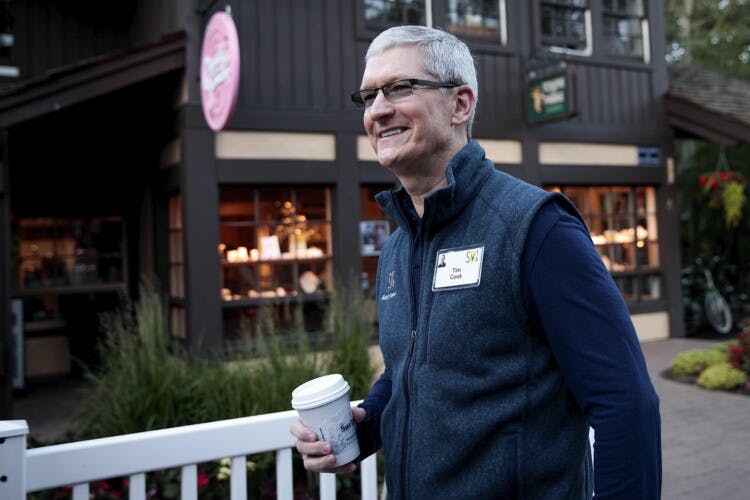
As a result, “tech bro” has become a term used in relation to anyone in the IT industry when they want to criticize them. In 2019, Seattle-based publication SeattleMet wrote an “obituary for the tech bro”, stating that the term has “lost all relevance” because it “alienates the very people we’re trying to get more inclusion from.” However, the term is occasionally used to this day.
The Birth of Crypto Bro
With the popularity of Bitcoin, it wasn’t enough to just be “tech bros” – there were more and more young investors who became interested in cryptocurrencies in pursuit of easy money. In 2017, they were called Bitcoin bro, and then the broader term “crypto bro” spread.
At that time, it was believed that a typical representative of crypto bros demonstratively calls himself an entrepreneur, brags on social networks about how much he earned from cryptocurrency, idealizes Elon Musk, dreams of colonizing Mars, and is interested in virtual reality.
The Lamborgini car became a status symbol among cultural representatives. Investors ironically calculated how many Bitcoins were needed to buy it, and the phrase “When Lambo?” was used in memes.
The first Bitcoin millionaires bought expensive sports cars to prove to the whole world that cryptocurrencies are not scams and that it is really possible to get rich with them.
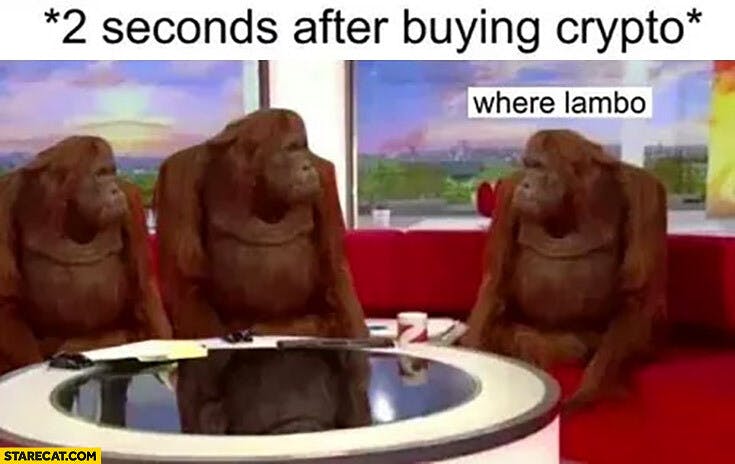
As in the tech bro culture, most crypto bros are men. The New York Times reported that parties after Bitcoin conferences were held in strip clubs, and startups were advertised with bikini-clad girls. Female investors have spoken out against bro-culture in the blockchain community, pointing out that it, too, has few women, just like IT companies.
Crypto bros do not agree with tech bros, perhaps only in political views: if the latter do not adhere to a certain ideology, the former are equated with libertarians. Crypto enthusiasts also believe that the monetary system should be free from centralized oversight and that the people, not the authorities, should make decisions.
The term “crypto bro” became more mainstream amid the spikes and drops of Bitcoin in 2018. Back then, many analysts warned of a “financial bubble” while crypto bros scoffed at them and urged them to buy Bitcoins on the fall. When the rate did collapse, social networks ironized over crypto investors who tried in every possible way to justify the unexpected market crash.
What Does a Modern Crypto Bro Look Like?
Interest in Bitcoin waned after a sharp drop in the exchange rate, but 2021 brought cryptocurrencies back into the spotlight.
The entire year was accompanied by the rise of Bitcoin, the massive proliferation of NFTs, interest in meme cryptocurrencies like Dogecoin, tech companies’ belief in developing meta-universes, and attempts to create decentralized communities in pursuit of Web3. During this period, the term gained widespread popularity.

Due to new trends, the image of cryptocurrency brokers has also changed – they are now seeking decentralization and anonymity, exploring meta-universes, and investing in altcoins, such as Ether. They no longer seek to get rich quickly by trading but more often “hold” cryptocurrency regardless of the market situation, waiting for the rate to “fly to the moon.”
Cryptobro differs from a simple crypto investor in that he does not just buy Bitcoins, invest in NFT, and dream of a new Internet in virtual reality, but is sincerely convinced that he is on the cutting edge of progress and will drive global changes in the whole society with his actions. Cryptobro also tries to convince everyone who is willing to listen to him of this.

Cryptocurrency idols also gradually changed. Elon Musk began to lose popularity. Although the entrepreneur was praised for “raising Dogecoin to the moon” with a single tweet, many people did not like this tactic when he similarly “collapsed” the Bitcoin rate. Crypto bros accused the head of Tesla of market manipulation.
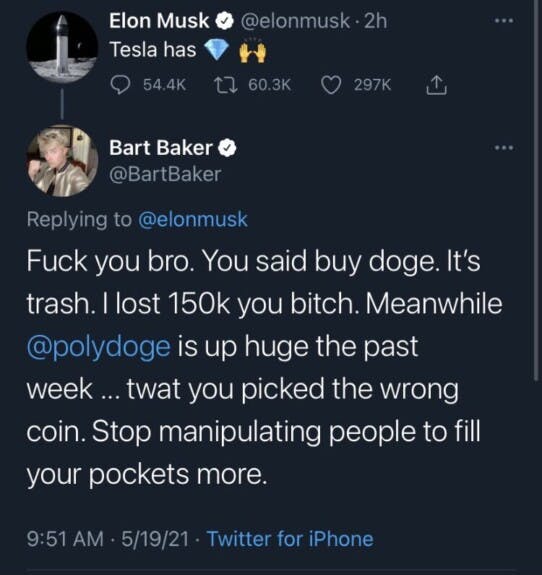
The place of the idol of crypto bros was taken by the president of El Salvador Nayib Bukele, who achieved the recognition of Bitcoin as the official currency in the country and then purchased 1,801 bitcoins for $85 million with budget money.
Crypto-subreddit users wrote him open letters, called him a hero, praised him for “giving money away to citizens”, and supported him even after the country’s budget lost 20% of its investments due to the Bitcoin crash.
While for Musk, cryptocurrencies were limited to Twitter entertainment, Bukele has shown that he takes them seriously.
Due to overconfidence in the future success of cryptocurrencies and, at the same time, ignorance of the rules of investing, the behavior of crypto bros began to be ridiculed more often in social networks: novice investors do not understand that you have to pay taxes for buying Bitcoin, they delete posts on social networks about their “successful transactions” to hide evidence from regulators, or they ask random people what coins to buy.
The social media’s lenient attitude toward crypto bros is also because more and more scammers have appeared in the wave of “meme” cryptocurrencies. They release cheap coins with small capitalization, lure investors, and hide with eight-digit amounts of dollars at the rate’s peak.
After this, the coin’s value falls sharply. Such a scheme is called “pump and dump.”

This scheme was used to sell fake cryptocurrency on “The Squid Game”, the “antique” version of Dogecoin, and even the coin Jizz Monkey. Fraudulent cryptocurrencies have reached such proportions that Kim Kardashian and Floyd Mayweather were sued for advertising such things.
In addition to outright scamming, crypto bros raise money for some pretty questionable things, often without knowing the purpose for which they are trying to buy something. For example, crypto bros:
- Tied to buy a rare copy of the U.S. Constitution at auction (for no particular purpose – they decided to give voting rights to participants after the purchase), raised over $40 million, lost the auction, but couldn’t withdraw the money due to blockchain commissions.
- Spent $3 million on a book with storyboards of Alejandro Chodorowsky’s unfilmed “Dune” and decided to make a TV series based on it for Netflix, thinking they had acquired the rights to adapt the work.
- Tried to buy a record-sized cube of tungsten to look at and touch once a year.
Also, because of the image of cryptocurrencies, many people began to doubt cryptocurrencies as an idea. On Reddit, they note that Bitcoin, conceived as an alternative currency for everyday payments, has become a “speculative asset with fluctuating rates”. In addition, critics of cryptocurrencies are also outraged that crypto miners are wasting electricity just to “crunch the numbers” and maintain the level of trust in the cryptocurrency.
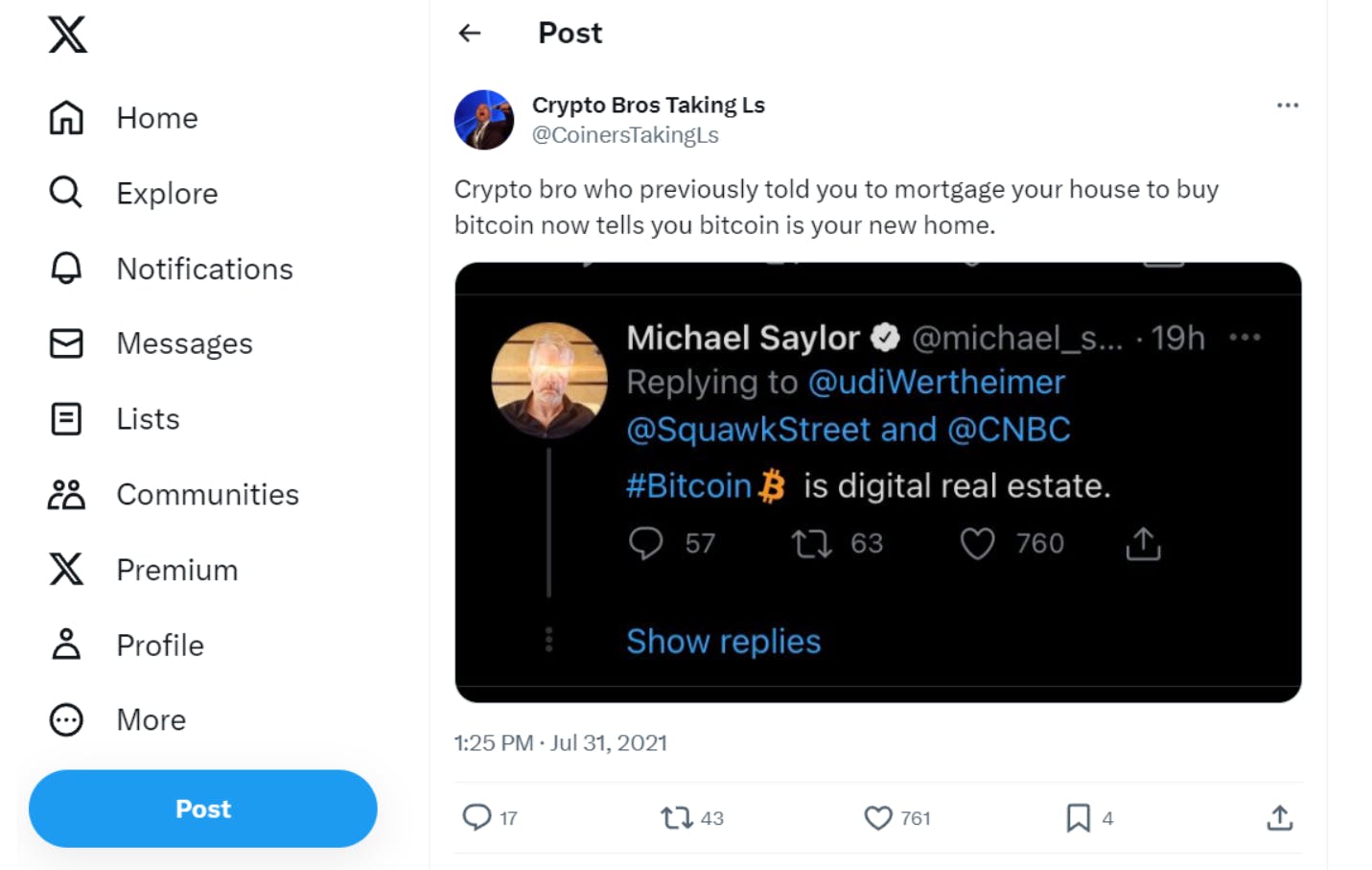
NFT Bro – Crypto Bro’s Little Brother
It was originally envisioned that NFTs would help artists make money from their art, who would directly sell their work through blockchain. Buyers would become kind collectors of digital art and could earn on the resale of “artifacts.”
NFT (non-fungible token) is a virtual digital unit in the blockchain network, a unique certificate that guarantees the originality of the object and gives exclusive rights to it. To be an NFT collector is to philosophically accept the idea that you “own” all similar JPEGs distributed on the network.
However, it wasn’t artists who took over the market. Initially, heroes of forgotten memes, stars, and brands started to profit from selling NFTs, and then fraudsters penetrated the market.
Marketplaces were flooded with art stolen from little-known artists, as well as copies of popular NFT collections. It got to the point where two projects completely copied the mirror collection of Bored Apes, and then started arguing about which of them was the “real” one.
In addition to stealing content, NFT enthusiasts are occasionally accused of money laundering. Suppose a purchase is made by transferring Ethereum from one anonymous wallet to another. In that case, nothing stops them from transferring money to themselves, passing it off as a digital art transaction to the tax authorities.

In some cases, crypto investors pay millions of dollars to “NFT artists” who hide with the money and do not even release art. Social networks wonder how one can trust the promises of creators of anonymous projects. Sometimes, celebrities appear to ignorantly promote NFTs that end up being scams.
Critics who see the virtual items market as meaningless or even fraudulent have named enthusiasts as NFT bros. Usually, representatives of such culture put their digital artifacts (most often looking like colorful animals) on their avatars in social networks, see their purchase as the future, and try to convince critics that they cannot realize the real value of owning digital content.
After all, a postcard with a copy of the Mona Lisa cannot be equated with the original painting.

In response, NFT bros have named their critics “right clickers” for taking screenshots of purchases from marketplaces or just right-clicking saves. Crypto-enthusiasts consider the term “right clicker” offensive, though their critics only laugh it off.
Periodically, NFT bros demand that screenshots be deleted and advocate banning the saving of pictures on marketplaces or even on Twitter, which has allowed digital artifacts to be put on avatars.

In social networks, the image of NFT bro has developed around people who invest all their money in digital artifacts, blindly believing that they will someday pay off. An illustration of this behavior was a Reddit user who gave his girlfriend an NFT instead of an engagement ring, spending his entire life savings on it.
Because of cases like this, NFT bros are portrayed as obsessed fanatics who are willing to buy up any digital artifacts in hopes of speculating on the market in the future. And even crypto bros criticize them for hoping too much for the success of NFT.

Conclusion
Pejorative terms for cryptocurrencies and their other “brethren” have arisen as a reaction to distrust of digitalization. Cryptocurrencies are called pyramid schemes, NFTs are considered meaningless and speculative, and meta-universes are not developed enough for continuous use.
But who knows, perhaps while Twitter is mocking the crypto bros’ next failures, they are actually paving the way for the future, teaching others from their own mistakes.
Tech
Harvard Alumni, Tech Moguls, and Best-Selling Authors Drive Nearly $600 Million in Pre-Order Sales
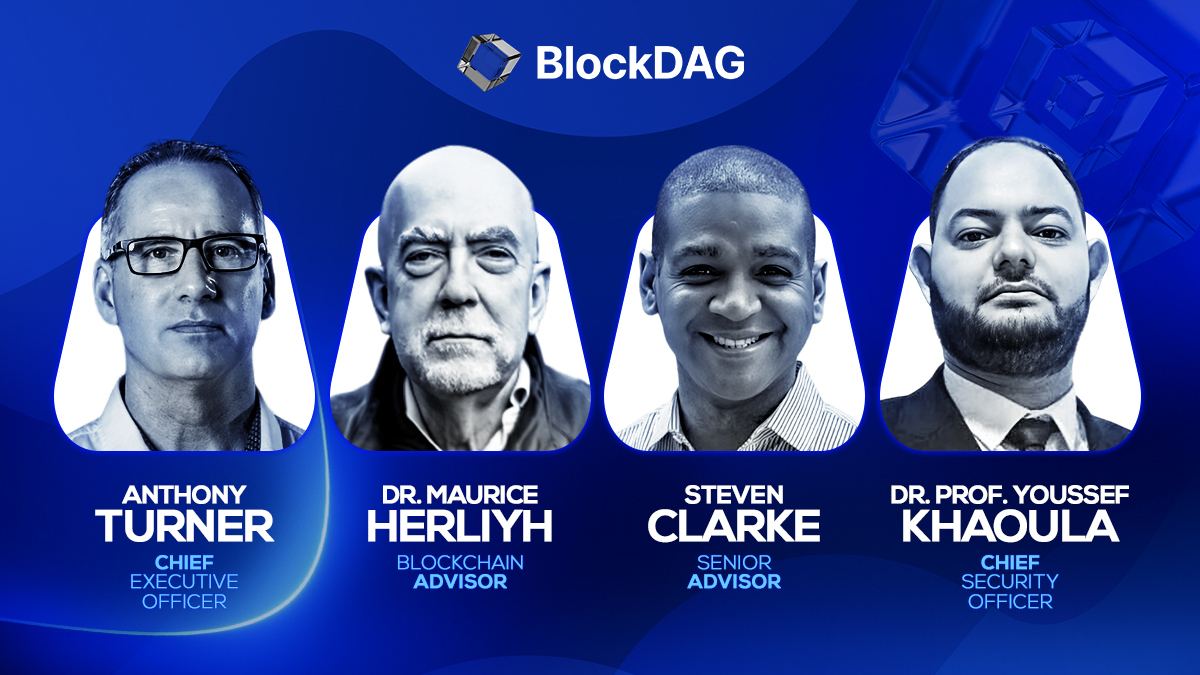
BlockDAG Network’s history is one of innovation, perseverance, and a vision to push the boundaries of blockchain technology. With Harvard alumni, tech moguls, and best-selling authors at the helm, BlockDAG is rewriting the rules of the cryptocurrency game.
CEO Antony Turner, inspired by the successes and shortcomings of Bitcoin and Ethereum, says, “BlockDAG leverages existing technology to push the boundaries of speed, security, and decentralization.” This powerhouse team has led a staggering 1,600% price increase in 20 pre-sale rounds, raising over $63.9 million. The secret? Unparalleled expertise and a bold vision for the future of blockchain.
Let’s dive into BlockDAG’s success story and find out what the future holds for this cryptocurrency.
The Origin: Why BlockDAG Was Created
In a recent interview, BlockDAG CEO Antony Turner perfectly summed up why the market needs BlockDAG’s ongoing revolution. He said:
“The creation of BlockDAG was inspired by Bitcoin and Ethereum, their successes and their shortcomings.
If you look at almost any new technology, it is very rare that the first movers remain at the forefront forever. Later incumbents have a huge advantage in entering a market where the need has been established and the technology is no longer cutting edge.
BlockDAG has done just that: our innovation is incorporating existing technology to provide a better solution, allowing us to push the boundaries of speed, security, and decentralization.”
The Present: How Far Has BlockDAG Come?
BlockDAG’s presale is setting new benchmarks in the cryptocurrency investment landscape. With a stunning 1600% price increase over 20 presale lots, it has already raised over $63.9 million in capital, having sold over 12.43 billion BDAG coins.
This impressive performance underscores the overwhelming confidence of investors in BlockDAG’s vision and leadership. The presale attracted over 20,000 individual investors, with the BlockDAG community growing exponentially by the hour.

These monumental milestones have been achieved thanks to the unparalleled skills, experience and expertise of BlockDAG’s management team:
Antony Turner – Chief Executive Officer
Antony Turner, CEO of BlockDAG, has over 20 years of experience in the Fintech, EdTech, Travel and Crypto industries. He has held senior roles at SPIRIT Blockchain Capital and co-founded Axona-Analytics and SwissOne. Antony excels in financial modeling, business management and scaling growth companies, with expertise in trading, software, IoT, blockchain and cryptocurrency.
Director of Communications
Youssef Khaoulaj, CSO of BlockDAG, is a Smart Contract Auditor, Metaverse Expert, and Red Team Hacker. He ensures system security and disaster preparedness, and advises senior management on security issues.

advisory Committee
Steven Clarke-Martin, a technologist and consultant, excels in enterprise technology, startups, and blockchain, with a focus on DAOs and smart contracts. Maurice Herlihy, a Harvard and MIT graduate, is an award-winning computer scientist at Brown University, with experience in distributed computing and consulting roles, most notably at Algorand.
The Future: Becoming the Cryptocurrency with the Highest Market Cap in the World
Given its impressive track record and a team of geniuses working tirelessly behind the scenes, BlockDAG is quickly approaching the $600 million pre-sale milestone. This crypto powerhouse will soon enter the top 30 cryptocurrencies by market cap.
Currently trading at $0.017 per coin, BlockDAG is expected to hit $1 million in the coming months, with the potential to hit $30 per coin by 2030. Early investors have already enjoyed a 1600% ROI by batch 21, fueling a huge amount of excitement around BlockDAG’s presale. The platform is seeing significant whale buying, and demand is so high that batch 21 is almost sold out. The upcoming batch is expected to drive prices even higher.

Invest in BlockDAG Pre-Sale Now:
Pre-sale: https://purchase.blockdag.network
Website: https://blockdag.network
Telegram: https://t.me/blockDAGnetwork
Discord: Italian: https://discord.gg/Q7BxghMVyu
No spam, no lies, just insights. You can unsubscribe at any time.
Tech
How Karak’s Latest Tech Integration Could Make Data Breaches Obsolete

- Space and Time uses zero-knowledge proofs to ensure secure and tamper-proof data processing for smart contracts and enterprises.
- The integration facilitates faster development and deployment of Distributed Secure Services (DSS) on the Karak platform.
Karak, a platform known for its strong security capabilities, is enhancing its Distributed Secure Services (DSS) by integrating Space and Time as a zero-knowledge (ZK) coprocessor. This move is intended to strengthen trustless operations across its network, especially in slashing and rewards mechanisms.
Space and Time is a verifiable processing layer that uses zero-knowledge proofs to ensure that computations on decentralized data warehouses are secure and untampered with. This system enables smart contracts, large language models (LLMs), and enterprises to process data without integrity concerns.
The integration with Karak will enable the platform to use Proof of SQL, a new ZK-proof approach developed by Space and Time, to confirm that SQL query results are accurate and have not been tampered with.
One of the key features of this integration is the enhancement of DSS on Karak. DSS are decentralized services that use re-staked assets to secure the various operations they provide, from simple utilities to complex marketplaces. The addition of Space and Time technology enables faster development and deployment of these services, especially by simplifying slashing logic, which is critical to maintaining security and trust in decentralized networks.
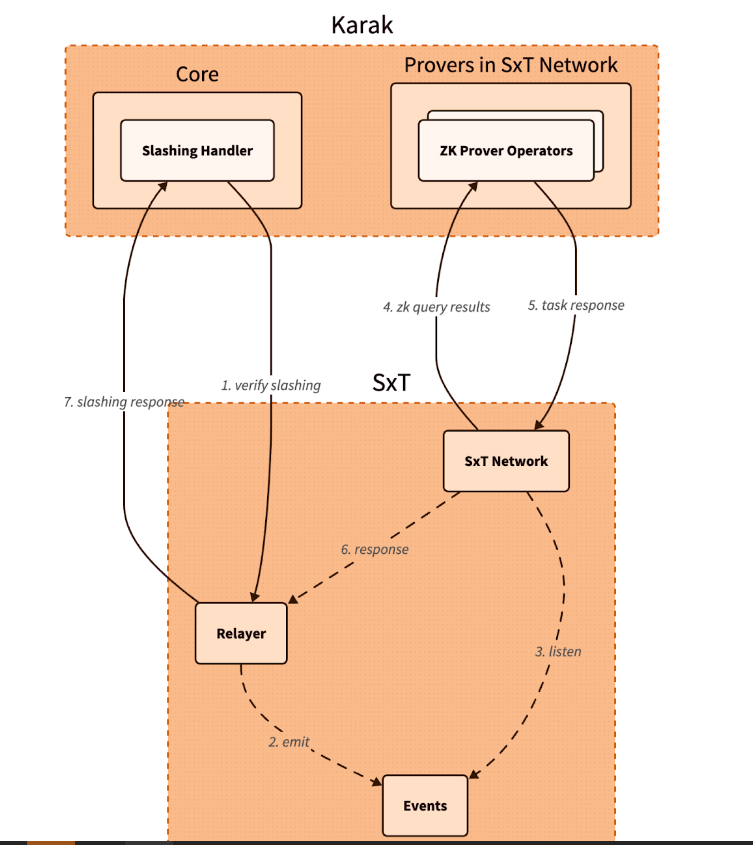
Additionally, Space and Time is developing its own DSS for blockchain data indexing. This service will allow community members to easily participate in the network by running indexing nodes. This is especially beneficial for applications that require high security and decentralization, such as decentralized data indexing.
The integration architecture follows a detailed and secure flow. When a Karak slashing contract needs to verify a SQL query, it calls the Space and Time relayer contract with the required SQL statement. This contract then emits an event with the query details, which is detected by operators in the Space and Time network.
These operators, responsible for indexing and monitoring DSS activities, validate the event and route the work to a verification operator who runs the query and generates the necessary ZK proof.
The result, along with a cryptographic commitment on the queried data, is sent to the relayer contract, which verifies and returns the data to the Karak cutter contract. This end-to-end process ensures that the data used in decision-making, such as determining penalties within the DSS, is accurate and reliable.
Karak’s mission is to provide universal security, but it also extends the capabilities of Space and Time to support multiple DSSs with their data indexing needs. As these technologies evolve, they are set to redefine the secure, decentralized computing landscape, making it more accessible and efficient for developers and enterprises alike. This integration represents a significant step towards a more secure and verifiable digital infrastructure in the blockchain space.
Website | X (Twitter) | Discord | Telegram
No spam, no lies, just insights. You can unsubscribe at any time.
Tech
Cryptocurrency Payments: Should CFOs Consider This Ferrari-Approved Trend?
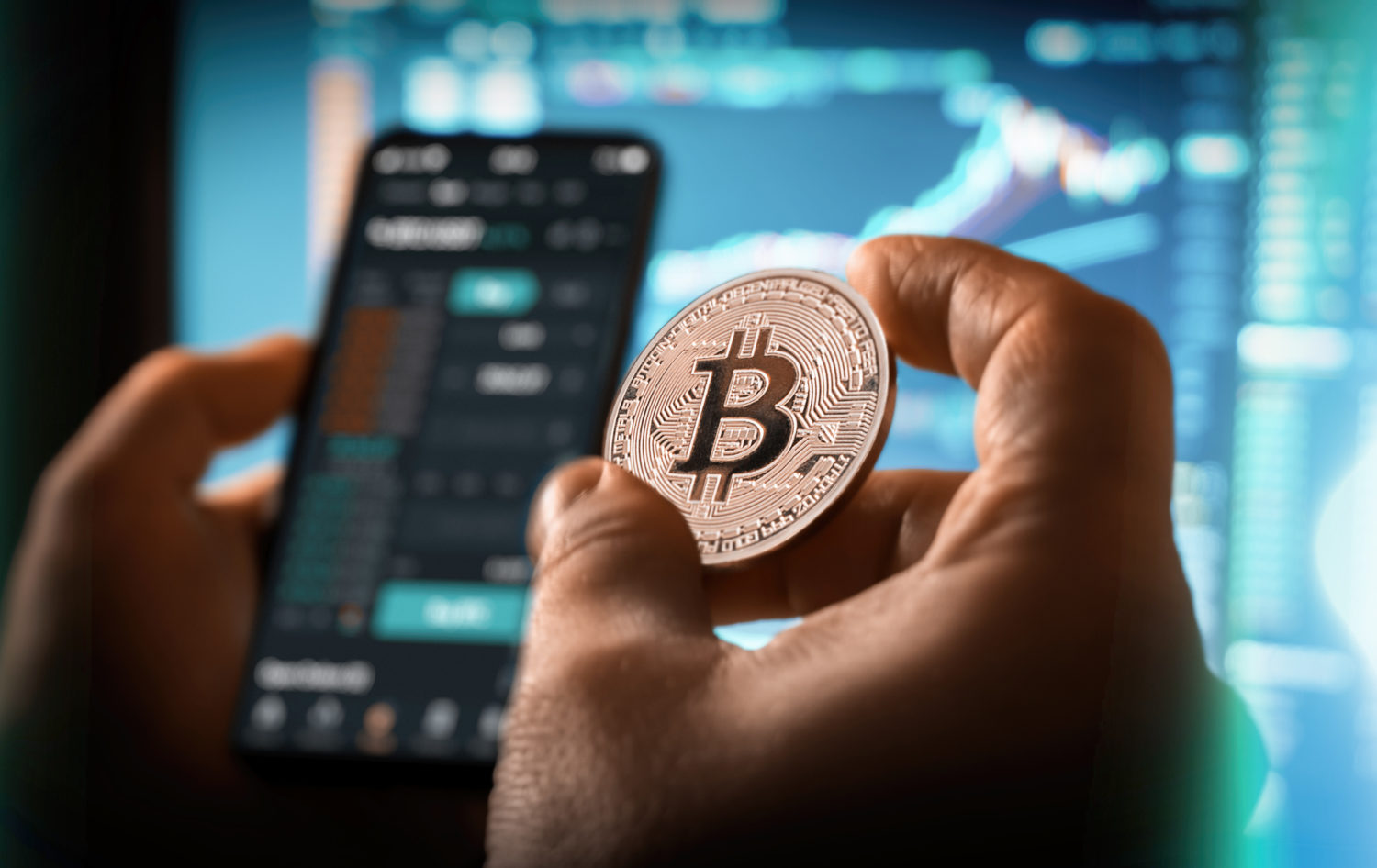
Iconic Italian luxury carmaker Ferrari has announced the expansion of its cryptocurrency payment system to its European dealer network.
The move, which follows a successful launch in North America less than a year ago, raises a crucial question for CFOs across industries: Is it time to consider accepting cryptocurrency as a form of payment for your business?
Ferrari’s move isn’t an isolated one. It’s part of a broader trend of companies embracing digital assets. As of 2024, we’re seeing a growing number of companies, from tech giants to traditional retailers, accepting cryptocurrencies.
This change is determined by several factors:
- Growing mainstream adoption of cryptocurrencies
- Growing demand from tech-savvy and affluent consumers
- Potential for faster and cheaper international transactions
- Desire to project an innovative brand image
Ferrari’s approach is particularly noteworthy. They have partnered with BitPay, a leading cryptocurrency payment processor, to allow customers to purchase vehicles using Bitcoin, Ethereum, and USDC. This satisfies their tech-savvy and affluent customer base, many of whom have large digital asset holdings.
Navigating Opportunities and Challenges
Ferrari’s adoption of cryptocurrency payments illustrates several key opportunities for companies considering this move. First, it opens the door to new customer segments. By accepting cryptocurrency, Ferrari is targeting a younger, tech-savvy demographic—people who have embraced digital assets and see them as a legitimate form of value exchange. This strategy allows the company to connect with a new generation of affluent customers who may prefer to conduct high-value transactions in cryptocurrency.
Second, cryptocurrency adoption increases global reach. International payments, which can be complex and time-consuming with traditional methods, become significantly easier with cryptocurrency transactions. This can be especially beneficial for businesses that operate in multiple countries or deal with international customers, as it potentially reduces friction in cross-border transactions.
Third, accepting cryptocurrency positions a company as innovative and forward-thinking. In today’s fast-paced business environment, being seen as an early adopter of emerging technologies can significantly boost a brand’s image. Ferrari’s move sends a clear message that they are at the forefront of financial innovation, which can appeal to customers who value cutting-edge approaches.
Finally, there is the potential for cost savings. Traditional payment methods, especially for international transactions, often incur substantial fees. Cryptocurrency transactions, on the other hand, can offer lower transaction costs. For high-value purchases, such as luxury cars, these savings could be significant for both the business and the customer.
While the opportunities are enticing, accepting cryptocurrency payments also presents significant challenges that businesses must address. The most notable of these is volatility. Cryptocurrency values can fluctuate dramatically, sometimes within hours, posing potential risk to businesses that accept them as payment. Ferrari addressed this challenge by implementing a system that instantly converts cryptocurrency received into traditional fiat currencies, effectively mitigating the risk of value fluctuations.
Regulatory uncertainty is another major concern. The legal landscape surrounding cryptocurrencies is still evolving in many jurisdictions around the world. This lack of clear and consistent regulations can create compliance challenges for companies, especially those operating internationally. Companies must remain vigilant and adaptable as new laws and regulations emerge, which can be a resource-intensive process.
Implementation costs are also a significant obstacle. Integrating cryptocurrency payment systems often requires substantial investment in new technology infrastructure and extensive staff training. This can be especially challenging for small businesses or those with limited IT resources. The costs are not just financial; a significant investment of time is also required to ensure smooth implementation and operation.
Finally, security concerns loom large in the world of cryptocurrency transactions. While blockchain technology offers some security benefits, cryptocurrency transactions still require robust cybersecurity measures to protect against fraud, hacks, and other malicious activity. Businesses must invest in robust security protocols and stay up-to-date on the latest threats and protections, adding another layer of complexity and potential costs to accepting cryptocurrency payments.
Strategic Considerations for CFOs
If you’re thinking of following in Ferrari’s footsteps, here are the key factors to consider:
- Risk Assessment: Carefully evaluate potential risks to your business, including financial, regulatory, and reputational risks.
- Market Analysis: Evaluate whether your customer base is significantly interested in using cryptocurrencies for payments.
- Technology Infrastructure: Determine the costs and complexities of implementing a cryptographic payment system that integrates with existing financial processes.
- Regulatory Compliance: Ensure that cryptocurrency acceptance is in line with local regulations in all markets you operate in. Ferrari’s gradual rollout demonstrates the importance of this consideration.
- Financial Impact: Analyze how accepting cryptocurrency could impact your cash flow, accounting practices, and financial reporting.
- Partnership Evaluation: Consider partnering with established crypto payment processors to reduce risk and simplify implementation.
- Employee Training: Plan comprehensive training to ensure your team is equipped to handle cryptocurrency transactions and answer customer questions.
While Ferrari’s adoption of cryptocurrency payments is exciting, it’s important to consider this trend carefully.
A CFO’s decision to adopt cryptocurrency as a means of payment should be based on a thorough analysis of your company’s specific needs, risk tolerance, and strategic goals. Cryptocurrency payments may not be right for every business, but for some, they could provide a competitive advantage in an increasingly digital marketplace.
Remember that the landscape is rapidly evolving. Stay informed about regulatory changes, technological advancements, and changing consumer preferences. Whether you decide to accelerate your crypto engines now or wait in the pit, keeping this payment option on your radar is critical to navigating the future of business transactions.
Was this article helpful?
Yes No
Sign up to receive your daily business insights
Tech
Bitcoin Tumbles as Crypto Market Selloff Mirrors Tech Stocks’ Plunge
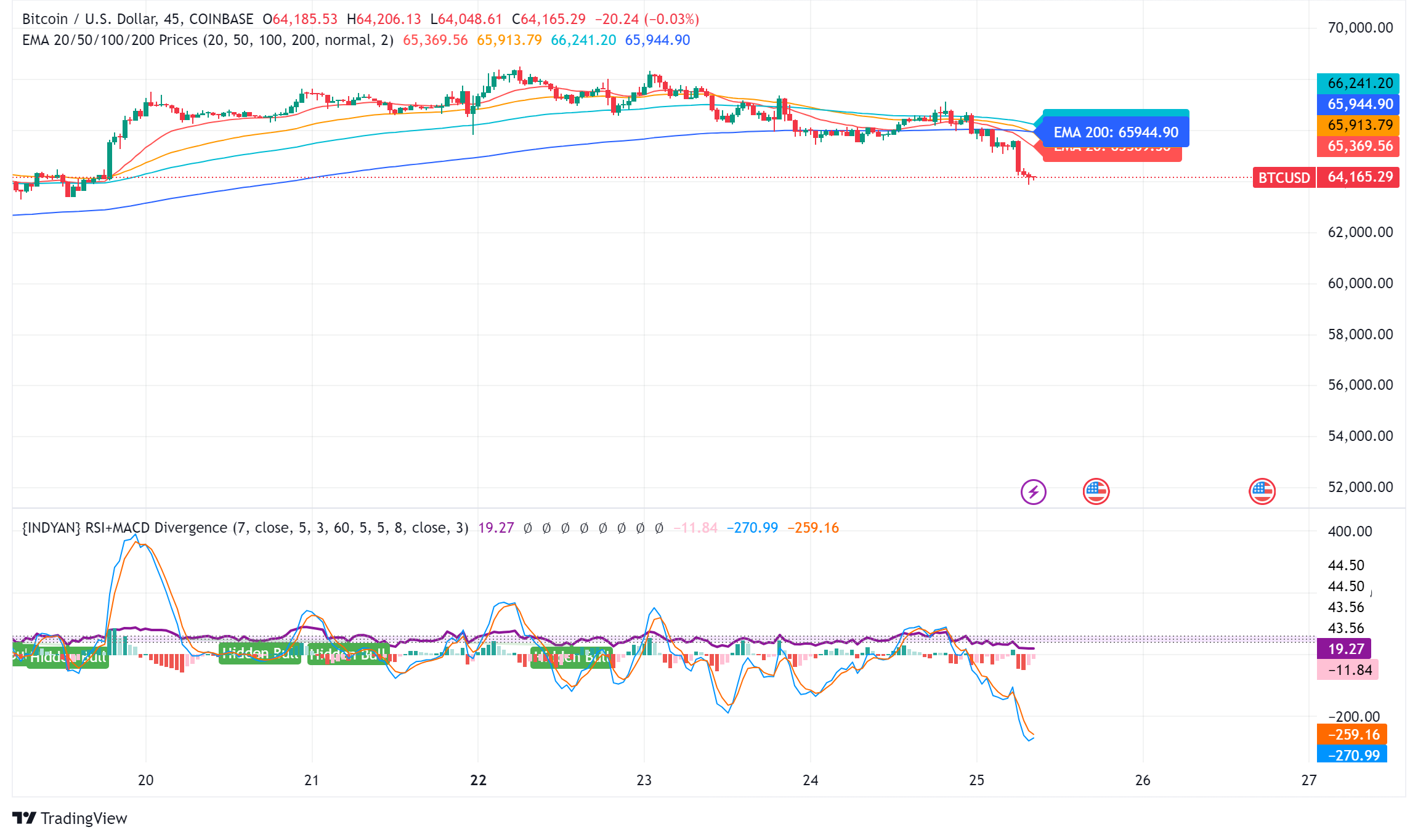
The world’s largest cryptocurrency, Bitcoin (BTC), suffered a significant price decline on Wednesday, falling below $65,000. The decline coincides with a broader market sell-off that has hit technology stocks hard.
Cryptocurrency Liquidations Hit Hard
CoinGlass data reveals a surge in long liquidations in the cryptocurrency market over the past 24 hours. These liquidations, totaling $220.7 million, represent forced selling of positions that had bet on price increases. Bitcoin itself accounted for $14.8 million in long liquidations.
Ethereum leads the decline
Ethereal (ETH), the second-largest cryptocurrency, has seen a steeper decline than Bitcoin, falling nearly 8% to trade around $3,177. This decline mirrors Bitcoin’s price action, suggesting a broader market correction.
Cryptocurrency market crash mirrors tech sector crash
The cryptocurrency market decline appears to be linked to the significant losses seen in the U.S. stock market on Wednesday. Stock market listing The index, heavily weighted toward technology stocks, posted its sharpest decline since October 2022, falling 3.65%.
Analysts cite multiple factors
Several factors may have contributed to the cryptocurrency market crash:
- Tech earnings are underwhelming: Earnings reports from tech giants like Alphabet are disappointing (Google(the parent company of), on Tuesday, triggered a sell-off in technology stocks with higher-than-expected capital expenditures that could have repercussions on the cryptocurrency market.
- Changing Political Landscape: The potential impact of the upcoming US elections and changes in Washington’s policy stance towards cryptocurrencies could influence investor sentiment.
- Ethereal ETF Hopes on the line: While bullish sentiment around a potential U.S. Ethereum ETF initially boosted the market, delays or rejections could dampen enthusiasm.
Analysts’ opinions differ
Despite the short-term losses, some analysts remain optimistic about Bitcoin’s long-term prospects. Singapore-based cryptocurrency trading firm QCP Capital believes Bitcoin could follow a similar trajectory to its post-ETF launch all-time high, with Ethereum potentially converging with its previous highs on sustained institutional interest.
Rich Dad Poor Dad Author’s Prediction
Robert Kiyosaki, author of the best-selling Rich Dad Poor Dad, predicts a potential surge in the price of Bitcoin if Donald Trump is re-elected as US president. He predicts a surge to $105,000 per coin by August 2025, fueled by a weaker dollar that is set to boost US exports.
BTC/USD Technical Outlook
Bitcoin price is currently trading below key support levels, including the $65,500 level and the 100 hourly moving average. A break below the $64,000 level could lead to further declines towards the $63,200 support zone. However, a recovery above the $65,500 level could trigger another increase in the coming sessions.
-

 Videos4 weeks ago
Videos4 weeks agoAbsolutely massive: the next higher Bitcoin leg will shatter all expectations – Tom Lee
-

 News12 months ago
News12 months agoVolta Finance Limited – Director/PDMR Shareholding
-

 News12 months ago
News12 months agoModiv Industrial to release Q2 2024 financial results on August 6
-

 News12 months ago
News12 months agoApple to report third-quarter earnings as Wall Street eyes China sales
-

 News12 months ago
News12 months agoNumber of Americans filing for unemployment benefits hits highest level in a year
-

 News1 year ago
News1 year agoInventiva reports 2024 First Quarter Financial Information¹ and provides a corporate update
-

 News1 year ago
News1 year agoLeeds hospitals trust says finances are “critical” amid £110m deficit
-

 Markets1 year ago
Markets1 year agoWhale Investments in Bitcoin Hit $100 Billion in 2024, Fueling Insane Investor Optimism ⋆ ZyCrypto
-
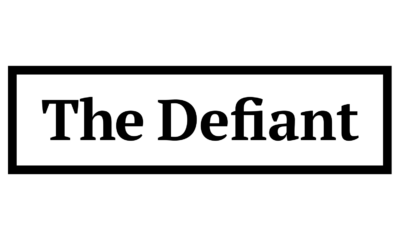
 DeFi1 year ago
DeFi1 year ago🏴☠️ Pump.Fun operated by Insider Exploit
-

 Videos1 year ago
Videos1 year ago$1,000,000 worth of BTC in 2025! Get ready for an UNPRECEDENTED PRICE EXPLOSION – Jack Mallers
-

 Videos1 year ago
Videos1 year agoABSOLUTELY HUGE: Bitcoin is poised for unabated exponential growth – Mark Yusko and Willy Woo
-

 Tech1 year ago
Tech1 year agoBlockDAG ⭐⭐⭐⭐⭐ Review: Is It the Next Big Thing in Cryptocurrency? 5 questions answered





